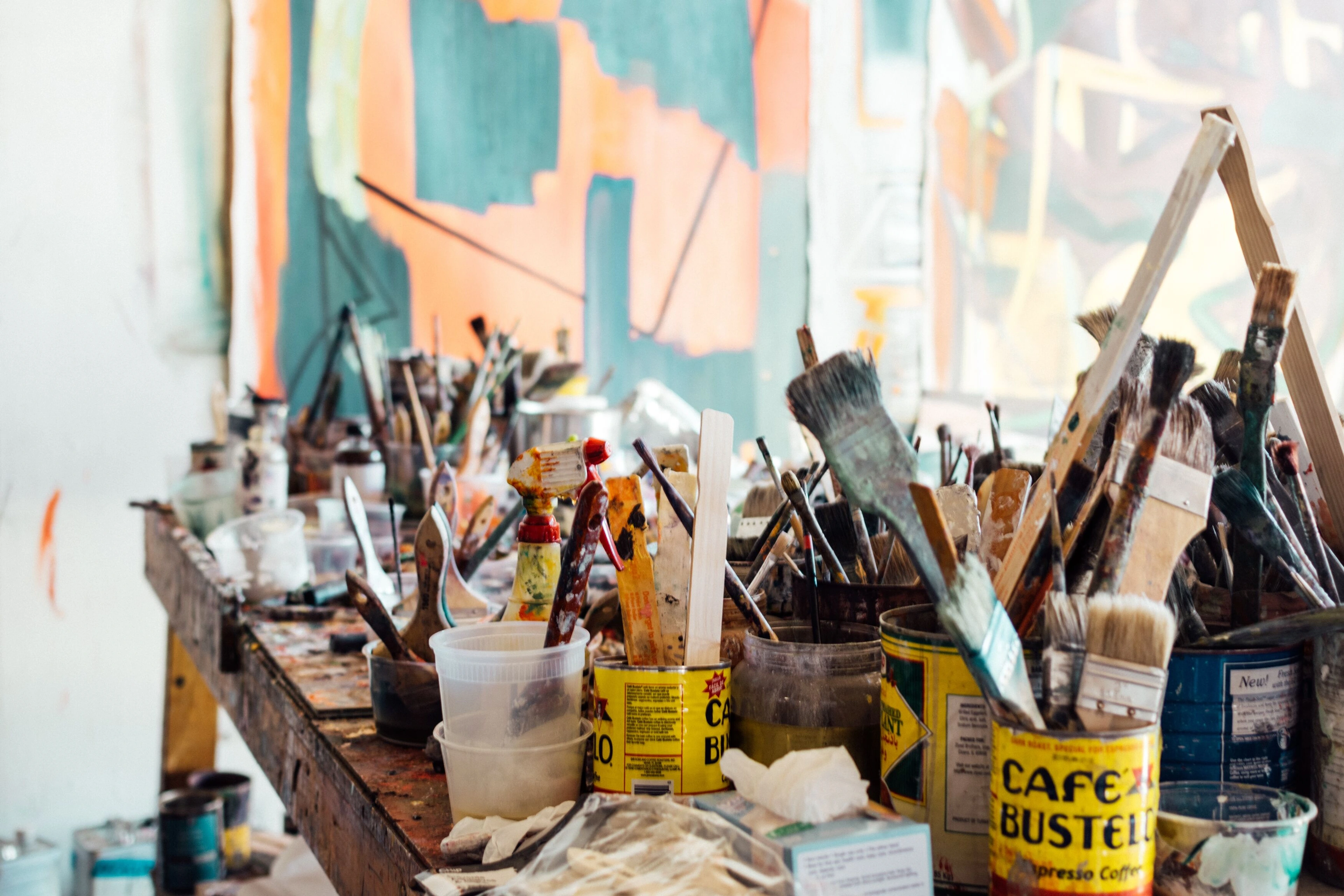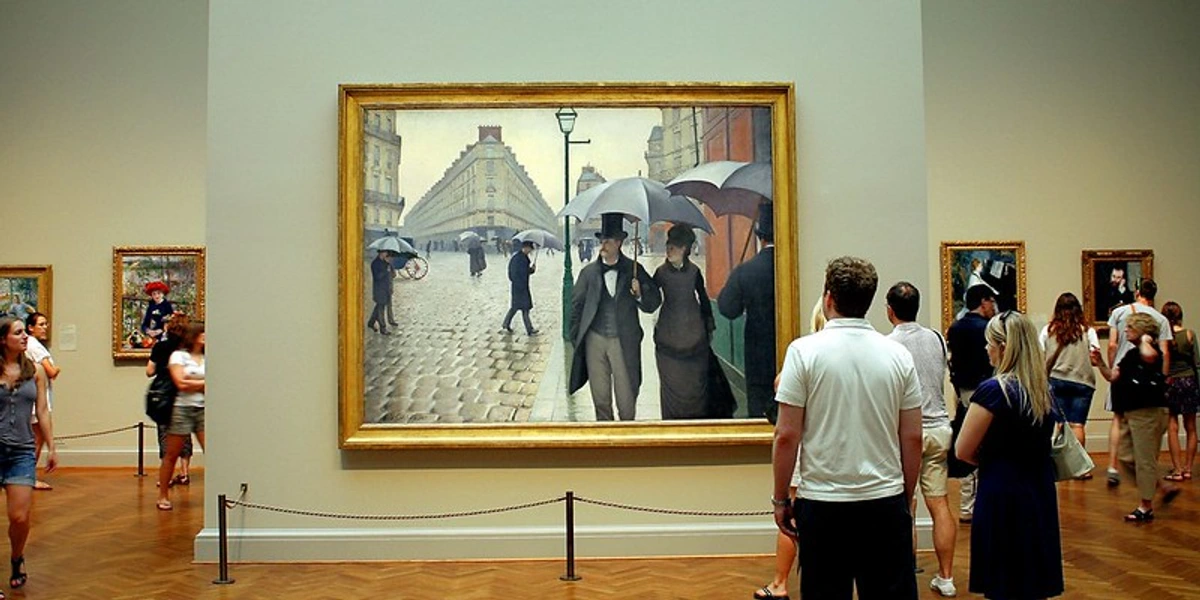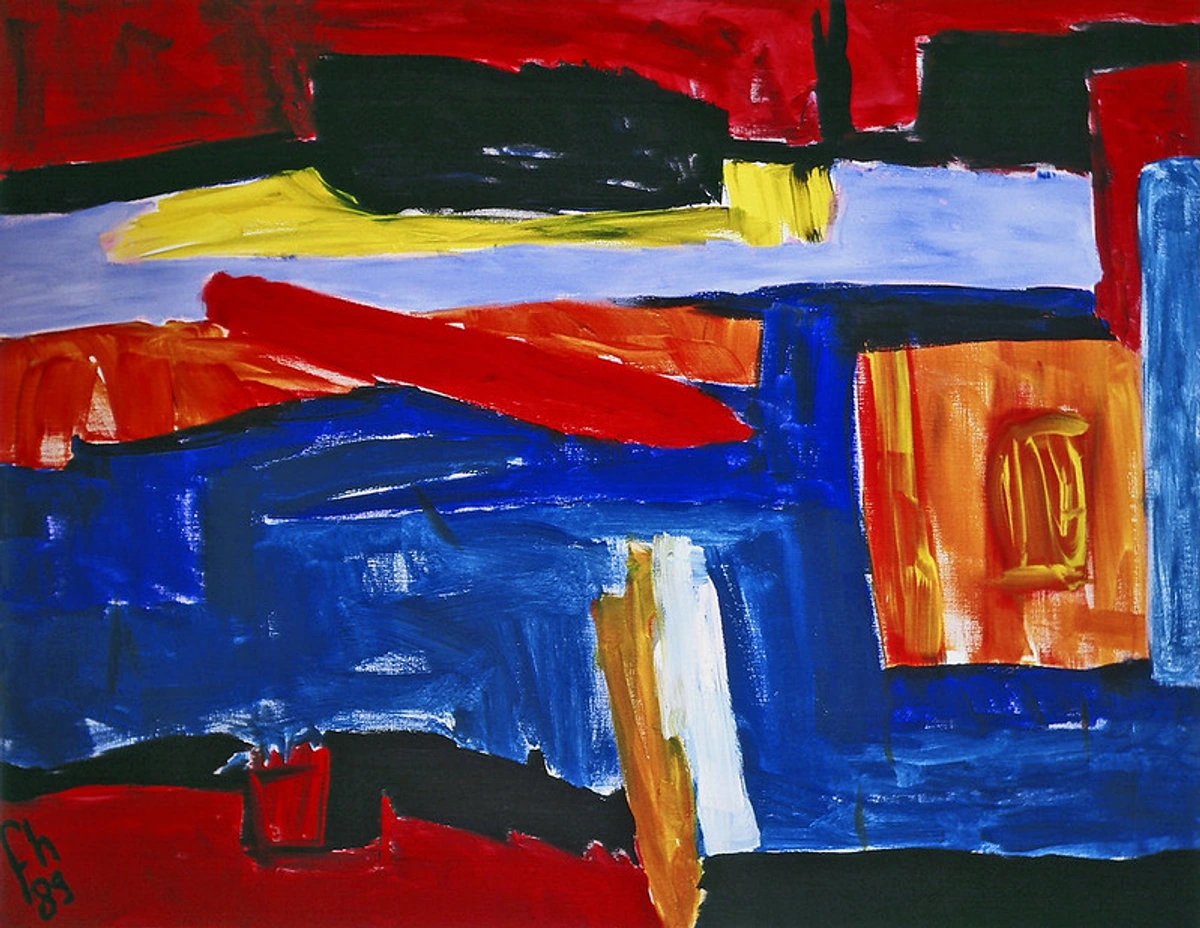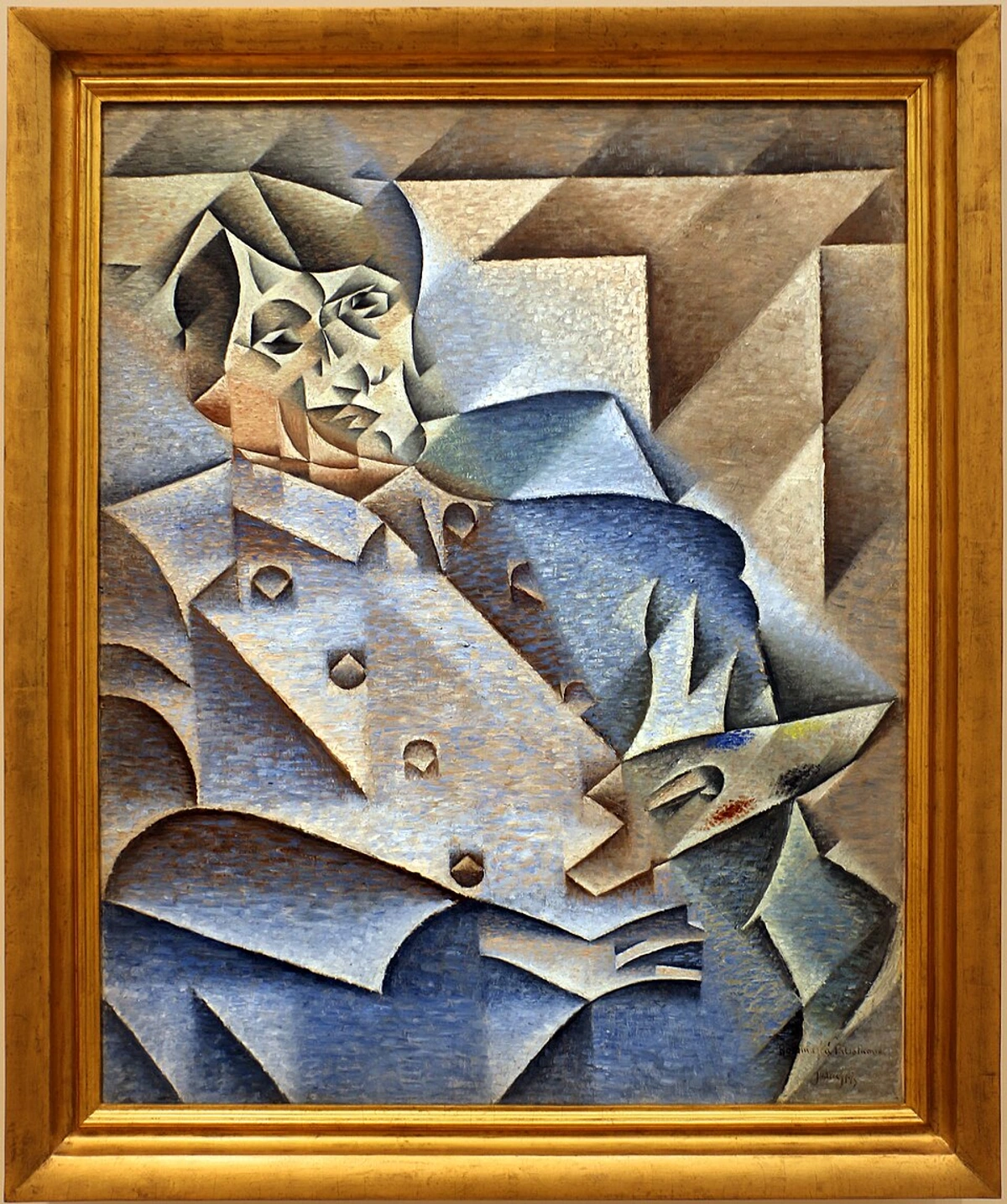
Rudolf Stingel: A Personal Guide to His Conceptual Art & Installations
Dive into Rudolf Stingel's art: his instruction paintings, interactive installations, photorealism, and conceptual approach that questions painting itself. Explore major shows like Palazzo Grassi & Fondation Beyeler, his dialogue with art history, and how his work challenges traditional art notions. A personal guide to a head-scratching genius.
Rudolf Stingel: A Personal Guide to His Conceptual Art & Installations
Ever walked into an art gallery and found the entire floor, maybe even the walls, covered in plush carpet? Or seen a giant, shimmering silver panel that looks like abstract art, only to realize it's covered in scratches and graffiti left by... well, everyone else? If so, you might have encountered the work of Rudolf Stingel. His art can be a bit of a head-scratcher at first. Is it painting? Sculpture? Interior design gone rogue? Or maybe all of the above? Prepare to rethink what a painting can be, because Stingel is here to dismantle your expectations, one carpeted room or scratched wall at a time. It's like he's constantly asking, "What is painting, anyway?" – and his answers are often surprising, sometimes beautiful, and always make you think.
I remember the first time I saw one of his carpet installations. It was disorienting, stepping onto this soft, patterned surface in a space I expected to be hard and polished. It immediately made me question the boundaries – where does the art end and the environment begin? Stingel isn't an artist who just presents you with a finished picture and calls it a day. Oh no. He’s more interested in pulling back the curtain on how art gets made, what makes something 'art', and even letting the audience get their hands dirty (sometimes literally). I find his approach oddly refreshing; it cuts through some of the preciousness that can surround art, reminding us that it often starts with simple materials and actions.
This guide is your deep dive into Rudolf Stingel art. We'll explore his key ideas, his famous (and sometimes infamous) techniques – from DIY painting instructions to those interactive surfaces – and touch on significant shows like those at Palazzo Grassi and Fondation Beyeler. Prepare to rethink what a painting can be.
So, how did this artist, known for turning gallery floors into canvases and inviting vandalism, come to be? Let's pull back the curtain a little further.
Getting to Know Rudolf Stingel (Beyond the Head-Scratchers)
Born in Merano, Italy, in 1956, Stingel now lives and works primarily in New York City. He emerged in the late 1980s and quickly gained attention for his approach that blended conceptual art with the act of painting. He wasn't just focused on the final image but deeply invested in the process, the materials, and the context surrounding the artwork. His emergence in the late 80s, a time when painting was constantly being declared 'dead' or irrelevant, feels particularly poignant to me. It's like he stepped onto the scene and said, "Hold on, you're looking at it all wrong. Painting isn't dead; you're just not asking the right questions about it." That willingness to challenge assumptions about a centuries-old medium is something I find incredibly inspiring in my own practice.
He belongs to a generation of artists questioning the traditions of painting, exploring themes of authorship, authenticity, repetition, and the passage of time. Think of him less as a painter capturing a scene and more as an investigator exploring the very definition and possibilities of painting itself. He's definitely one of the key contemporary artists who has pushed boundaries.
The Stingel Playbook: Key Ideas and Techniques
Stingel doesn't stick to one style; he uses different methods to explore similar underlying questions. It's like having different tools to dismantle the same machine, each revealing a different facet of what painting could be.
Instructions for Painting (The DIY Approach)
One of his earliest and most defining moves was publishing a booklet in 1989 titled Instructions. It gave step-by-step directions on how to create a "Stingel painting," typically involving applying thick layers of paint through tulle netting onto a canvas, often resulting in shimmering, abstract silver surfaces. Take, for example, the Untitled (1989) series itself – these aren't just abstract paintings; they are physical manifestations of a set of rules. The resulting surfaces, often metallic and textured, look almost mechanically produced, yet they carry the ghost of the process. This immediately questioned authorship – if anyone can make it following instructions, who is the artist? It democratized the process, almost like a recipe. I remember reading about this and thinking, "Wait, so I could make a Stingel?" It feels like a playful jab at the mystique surrounding the artist's hand, suggesting that maybe the idea is the artwork, not just the execution. The booklet itself becomes a conceptual piece, a set of instructions that are simultaneously a blueprint for a painting and a commentary on painting's own rules. Kind of makes you wonder about the unique path every artist takes on their own creative timeline.
Carpet Installations
Stingel became famous for covering entire exhibition spaces – floors and sometimes walls – with carpet. Often brightly colored (like orange or pink) or patterned (floral, ornate, or even traditional oriental rug designs), these installations completely transformed the gallery environment. The choice of patterns like oriental rugs or floral motifs isn't accidental; it brings associations of domesticity, comfort, and decoration into the typically sterile "white cube" of the gallery, deliberately blurring the lines. Viewers walked on the artwork, leaving traces of their presence – footprints, dirt, wear and tear. The sheer scale of these pieces, like the vast installation at Palazzo Grassi in 2013, is overwhelming and immersive. Stepping onto the soft pile, the sound of footsteps is muffled, the light catches the texture differently, and the visual impact of the pattern stretching across an entire room is profound. The carpet becomes a canvas recording the passage of time and human interaction within the institutional space. Imagine trying to keep that clean – a nightmare for museum staff, I bet, but brilliant conceptually. It forces you to reconsider how we normally interact with art in a museum setting.

Celotex & Styrofoam Works
These are perhaps his most iconic interactive pieces. Stingel covers walls with panels of metallic-faced Celotex insulation board or soft Styrofoam. While the materials differ slightly in texture and durability (Celotex is firmer, Styrofoam softer), their conceptual use is similar: they are surfaces designed to be marked. He then invites (or at least permits) gallery visitors to scratch, draw, write, and generally leave their marks on the surface. Over the course of an exhibition, these panels accumulate a dense web of graffiti, turning into a collective, chaotic artwork. The sound of fingernails or tools scraping across the metallic Celotex or digging into the soft Styrofoam is a visceral part of the experience, highlighting the vulnerability of the material and the directness of the human touch. It’s a fascinating, and sometimes slightly alarming, reflection of public expression and the human urge to leave a mark. The results can range from poetic scribbles to... well, less poetic ones. I've seen photos of these installations where someone has just drawn a giant, crude smiley face right next to a deeply personal message – that tension between the profound and the utterly mundane is part of the work's power. This tension between the artist's initial intention (to create a surface for interaction) and the unpredictable, chaotic outcome created by the public is a core conceptual element. The scale here is also key; these often fill entire rooms, creating an overwhelming visual record of collective presence. Think of his installation at the Fondation Beyeler in 2019, where walls became a giant, temporary public diary. It also raises questions about the role of the institution – by allowing this interaction, the museum becomes complicit in the creation (and potential 'vandalism') of the artwork, blurring the lines of control.
Photorealistic Paintings
In contrast to the process-heavy abstract and interactive works, Stingel also creates meticulously rendered photorealistic paintings. Often based on photographs, these can include:
- Melancholy self-portraits, sometimes showing him looking older or weary (like his Untitled self-portraits from the early 2000s). These aren't flattering portraits; they often capture a sense of vulnerability or the simple, unvarnished reality of aging, confronting mortality through paint.
- Images referencing art history (more on Rudolf Stingel Picasso below).
- Landscapes or patterns derived from his earlier carpet or Celotex works, translating ephemeral traces into permanent paintings.
Why these specific subjects? It seems to be about exploring different facets of representation, memory, and the passage of time. His self-portraits confront mortality and the artist's own changing identity. The art historical references engage with the weight of the past and the nature of artistic legacy. And by painting images of his own temporary installations – like a close-up of a worn section of carpet or a detail from a scratched Celotex wall – he translates the ephemeral, interactive experience into a static, traditional object. It's like he's freezing a moment in the life of his other works, giving permanence to the temporary. This act of translation feels like a meditation on permanence and value, making me think about how we choose what to preserve and what to let fade. These works bring back a sense of traditional painterly skill but are still deeply conceptual, often exploring themes of memory, time, and the relationship between photography and painting. It's like he masters the rules just so he can break them elsewhere.
Landmark Moments: Palazzo Grassi & Fondation Beyeler
Stingel's conceptual rigor and visual impact have led to major solo exhibitions at prestigious venues. Two often searched for are:
- Rudolf Stingel at Palazzo Grassi (2013): This was a massive, immersive exhibition in Venice. Stingel covered the entire interior of the historic palace – over 5,000 square meters of floors and walls – with a custom-designed oriental carpet pattern. Hanging on these carpeted walls were his photorealistic paintings, creating a dialogue between pattern, environment, painting, and the building's own opulent history. It was a total environment, blurring the lines between artwork, decoration, and architecture. Walking through it must have felt like stepping inside one of his concepts, a truly overwhelming sensory experience, amplifying the themes of environment and interaction seen in his carpet works.
- Rudolf Stingel at Fondation Beyeler (2019): This exhibition near Basel, Switzerland (a must-visit spot for art lovers exploring European galleries), provided a comprehensive overview of his work. It featured examples from all his major series, including interactive Celotex walls, carpet installations, instruction paintings, and photorealistic self-portraits and art historical references. The Rudolf Stingel Beyeler show highlighted the consistency of his conceptual concerns across diverse materials and techniques, allowing visitors to see the full breadth of his questioning, from the participatory chaos of the scratched walls to the quiet contemplation of his painted photographs.
Stingel's Dialogue with Art History (Yes, Including Picasso)
Stingel doesn't operate in a historical vacuum. His work often subtly (or not so subtly) engages with the artists and movements that came before him.
- Abstract Expressionism & Minimalism: His abstract instruction paintings can be seen as a commentary on the gestural canvases of Abstract Expressionism, replacing heroic individual expression with a reproducible formula. His use of industrial materials and focus on space also connects to Minimalism. You can explore more about these styles in our guide to art styles.

- Conceptual Art: His instruction pieces and interactive installations share a clear lineage with Conceptual Art figures like Sol LeWitt or Lawrence Weiner, who emphasized the idea or instructions behind the artwork over the physical object itself. Stingel takes this further by applying it directly to the act of painting.
- Arte Povera: The use of everyday, humble, or industrial materials like carpet, Celotex, and Styrofoam echoes the concerns of Arte Povera artists who sought to challenge traditional art materials and values.
- Pop Art: While not always visually similar, Stingel's use of repetition (in patterns or the repeatable nature of his instructions) and engagement with mass-produced materials can resonate with themes explored in Pop Art.
- Photography & Reproduction: His photorealistic work directly addresses the impact of photography on painting and the nature of images in an age of mechanical reproduction. It's like he's asking, "What can painting do that a photograph can't? Or vice versa?" by meticulously recreating photographic flatness with painterly depth. It makes me think about the endless conversation between different mediums. Seeing how Stingel filters these historical threads through his own unique lens really changed how I view the continuity of art history – it's not a series of isolated movements, but a constant, messy, fascinating dialogue.
- Rudolf Stingel Picasso Connection: Stingel has created paintings based on photographs of Pablo Picasso. This isn't about simply copying Picasso's style; it's more about engaging with the myth of the master artist. By rendering Picasso through the detached lens of photorealism, Stingel seems to be examining notions of artistic genius, legacy, and how historical figures are represented and consumed. It’s a complex nod to a giant of modern art, filtered through Stingel's own conceptual framework. For more on Picasso himself, check out our ultimate guide to Picasso.

Experiencing Stingel: More Than Meets the Eye
Seeing Rudolf Stingel artwork in person is key. Reproductions struggle to capture the texture of his surfaces, the scale of his installations, or the cumulative effect of the marks on his interactive pieces. The shimmer of the silver, the worn pile of the carpet, the layered history on the Celotex – these are tactile and environmental experiences that photos can only hint at. You might even catch the faint, distinct smell of the materials – the industrial scent of Celotex or the specific aroma of new or worn carpet – adding another layer to the sensory encounter.
- Where to See Him: His work is in major museum collections globally (MoMA NYC, Whitney, Tate London, etc.) and represented by top galleries like Gagosian. Many of these major institutions are known for having significant contemporary holdings, so keeping an eye on their schedules is a good bet. You can explore more about museums worldwide in our museums worldwide guide.
- How to Approach It: Don't just look at it; think about how it was made and what it's doing in the space. Engage your senses and your mind.
- If it's an instruction painting, consider the implications of the formula. What does it mean for the artist's hand? What does it mean that anyone could make it? Does that change its value? It makes you question the very definition of an original.
- If it's a carpet, notice the traces left by others, the feel underfoot, how it changes the room. Listen to the sound of your own footsteps on the surface. How does it feel to walk on the art? It's a strange mix of reverence and... well, just walking.
- If it's Celotex, read the graffiti (with caution!), observe the layers, think about public versus private space. What does this collective mark-making say about us? Maybe even add your own mark if permitted – though check the rules first! Don't be that person. It's a fascinating study in human nature, isn't it? The urge to leave a trace, even a fleeting one.
- If it's photorealism, consider the source image, the act of translation into paint, the themes of time and memory. How does the painterly surface change your perception compared to a photograph? Learning how to read a painting is useful, even when the painting is questioning itself.
His works fetch high prices on the secondary art market, reflecting his status. This adds another fascinating layer of complexity, or perhaps irony, to his practice. How does art that is inherently temporary or participatory – designed to be walked on, scratched, and eventually discarded or transformed – fit into a market built on collecting durable, pristine objects? It challenges traditional notions of ownership and value in a very direct way. While owning a Stingel might be out of reach for many, understanding his ideas can enrich how you look at all kinds of contemporary art available today. It might even make you think differently about your own art for home or how you buy art and interact with it.
Why Rudolf Stingel Still Resonates
Stingel matters because he makes painting feel relevant and dynamic in the 21st century. He achieves this not by ignoring its history, but by dissecting it, playing with its conventions, and inviting participation. He reminds us that:
- Art is also about process and concept, not just the finished object.
- The viewer can be part of the art's creation and meaning.
- Everyday materials and environments can become sites for artistic exploration.
- Questioning authorship and authenticity remains a vital conversation.
- The scale and sensory experience of art are powerful tools.
- The institution plays a role in shaping the art experience.
- His work challenges traditional notions of conservation and the lifespan of art objects, forcing us to consider what it means for art to be temporary or constantly changing.
His influence lies in this expansion of what painting can encompass, blending conceptual depth with often striking visual and tactile experiences. His work encourages us to look beyond the surface, to consider the layers of meaning, and perhaps even to leave our own mark, metaphorically or literally. Critics often highlight the tension in his work – between control (the artist's initial concept) and chaos (viewer interaction), between the sublime (immersive scale) and the mundane (carpet, insulation board). It's this push and pull that keeps his work so compelling.
Questions I Often Get Asked About Rudolf Stingel
- Q: What kind of art does Rudolf Stingel make?
- A: Stingel makes conceptual paintings and installations. What I find fascinating is how he uses various techniques – like instruction-based abstract paintings, room-sized carpet installations, interactive Celotex/Styrofoam panels that invite viewer graffiti, and photorealistic paintings – all to explore the fundamental nature of painting itself. It's painting that's constantly asking questions about being painting.
- Q: What are Rudolf Stingel's carpet pieces about?
- A: His carpet installations transform gallery spaces, turning the floor/walls into the artwork. For me, they really highlight themes of environment, the blurring lines between decoration and fine art, the passage of time (as viewers leave traces), and the institutional context. The sheer scale and sensory experience are key – they make you incredibly aware of your own presence in the space, which is pretty powerful.
- Q: What are the silver panels where people can write?
- A: Those are typically his Celotex insulation board works (or sometimes Styrofoam). Stingel installs them and allows visitors to scratch, write, or draw on the metallic surface, creating a collective, evolving piece. It's all about public interaction and mark-making. The scale of these installations is often immense, turning a room into a giant, temporary public canvas, which is a wild concept when you think about it.
- Q: Did Rudolf Stingel paint pictures of Picasso?
- A: Yes, he did! Stingel has created photorealistic paintings based on photographs of Pablo Picasso. It's not just a straightforward portrait; it's his way of engaging with the legacy and myth of such a master artist, exploring representation and art history through his own conceptual lens. It also highlights the interesting relationship between photography and painting.
- Q: Where has Rudolf Stingel exhibited?
- A: He's had major solo shows worldwide, including significant exhibitions covering entire venues like the Palazzo Grassi in Venice (2013) and a comprehensive retrospective at the Fondation Beyeler in Switzerland (2019), among many others. His work is also in major museum collections globally, so you might encounter it in places like MoMA or the Tate.
Beyond the Surface
Rudolf Stingel's work might seem straightforward initially – a carpet, a silver panel, a painted photo. But dive a little deeper, and you find layers of thought about what art is, how it's made, and who gets to participate. He uses painting to talk about painting, often with a wry sense of humor and a willingness to let go of control. It's a conversation I find myself returning to, especially when I'm in my own studio, thinking about the materials I use or the marks I make. It makes me question my own process – how much is planned, how much is accidental, how much is influenced by the environment or the viewer? Stingel's work reminds me that even in the solitary act of painting, there are echoes of collaboration and context.

So, the next time you encounter his work, take a moment. Think about the instructions you weren't given, the traces left behind, and the questions being asked just beneath the surface. It’s an invitation to see the world – and art – a little differently. Maybe it will even inspire you to think about your own art inspirations or how you buy art and interact with it. His work is a powerful reminder that art isn't always a finished, untouchable object; sometimes, it's an ongoing process, a shared experience, and a challenge to our expectations.




